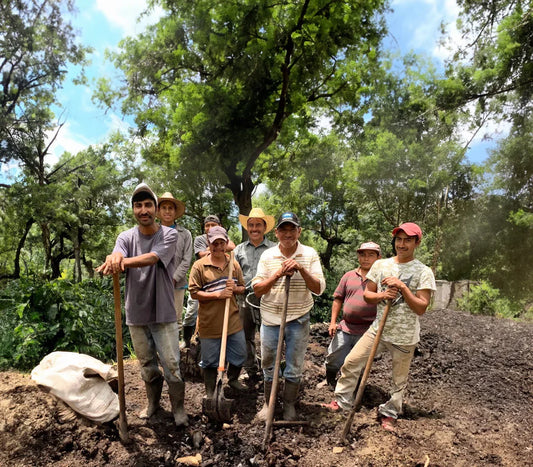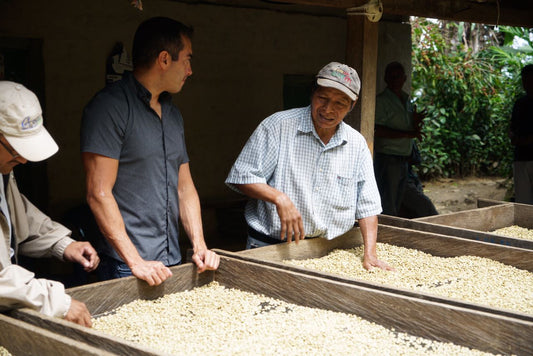
¡Feliz Año! Central American Traditions For the New Year
A new year brings with it 365 new possibilities – some years even bring 366!
Jump to:
In Central America, we have some small ways to mark the start of a new cycle around the sun even more special, with celebrations based either on superstition or tradition, and (just like our favorite holiday recetas) they've been passed down to us from previous generations.
Here are the six most common New Year’s Eve traditions in Central America, each of which have been created to attract fortune and good luck in the coming year.
Las Doce Uvas
New Year's Eve celebrations in Central America are generally accompanied by a bountiful feast. This can either be a fancy, elaborate feast or something simple such as an asado on the street shared with neighbors.
Whatever form the meal takes, there is one very important ingredient that cannot be missed: grapes. Twelve grapes, to be exact.
It doesn't matter whether they're green or red, tradition simply dictates that you should have a bunch of 12 grapes in hand at midnight in order to say goodbye to the old year and welcome in the New Year.
With every chime of the clock at midnight, a grape is eaten.
Yep, you've got it: that's 12 grapes in 12 seconds.
Each grape that you eat represents a wish that you have for the new year, one you hope will be fulfilled.
This tradition has Spanish roots and it is believed that it originated at the start of the 20th century when a particularly abundant harvest had winemakers believing that eating the fruits of the vine would bring good luck.
So now you know, make a wish with each of these delicious fruits – just be careful not to choke!
The Suitcase Race
If your wish is for a year filled with travel, you should definitely have an empty suitcase nearby come New Year’s Eve in Central America.
This tradition differs slightly from country to country: in some countries, it is enough to get on a chair, empty suitcase in hand; in others, you have to run around the house or even the entire the block with it. While in other countries, it is enough to simply leave the suitcases outside on the doorstep.
Personally, I like fun and fanfare of running around with a suitcase tied to my back! Just me?
Supposedly, this act of presenting a suitcase on the first day of the year guarantees that said suitcase will remain “dusted” during the year.
So, if you see someone sprinting down a Central American street, suitcase clutched to their chest on December 31st, don't worry: their house is most certainly not on fire. They are only hoping for a year filled with travel and adventure.
Wear Yellow Underwear
The color yellow has long been associated with prosperity and success.
This belief comes from pre-Hispanic times, when yellow – the color of the sun – was synonymous with new beginnings, energy, and vitality. Over time this tradition has evolved and, today, it is customary to put on yellow underwear on New Year's eve if you want to be financially prosperous in the months to come.
This tradition is particularly popular in Bolivia, and Venezuela, where residents are also known to put on red underwear if they want the year ahead to be filled with love and romance.
While I can't guarantee that it will work, it doesn't hurt to try it!

(Pre) Spring Clean
A more superstitious belief dictates that the best way to get rid of everything old from the past year and receive the New Year in the best way possible, is by thoroughly cleaning your house.
We are talking floors, windows, window coverings, and every furniture piece and knick knack.
Some people even rearrange their furniture in an attempt to get rid of any bad energy accumulated from tragic events during the past year.
I particularly like this tradition because who does not like a clean home?
The Pots and Pans Parade
Speaking of superstitions associated with ancient beliefs, New Year's nights are said to attract evil spirits that seek to annoy humans and sow discord in their hearts.
However, these spirits are repelled by loud sounds and songs as the story goes. Which is why, in many places, it is common for the entire family to arm themselves with pots and pans, spoons and ladles, or whatever metal instrument there is in the house, and bang it as loudly as they can against the cookware.
These loud noises, it is believed, will scare away any bad spirits that may want to bother the home and its inhabitants in the coming year.
Families also sing songs in high pitch to scare the spirits away.
It is a bit noisy, it is true, but it is difficult to imagine a New Year’s celebration without this custom.
Quema del Año Viejo
In some countries, especially Panama, Nicaragua and Honduras, it is customary to build a kind of human figure stuffed with paper, straw, wood, and other flammable materials (sometimes fireworks are even added) to represent the year old man.
The same figure is later set alight in a huge bonfire in front of neighbors and family, who laugh and shout around it.
This tradition seeks to represent that everything from the old year is behind us and that we are ready to receive the new year and all it holds.
There you have it, whether you are looking for a new year full of economic prosperity, travel, or love, I leave you these six ideas that can help you have an even more memorable 2023.
¡Feliz año nuevo!


